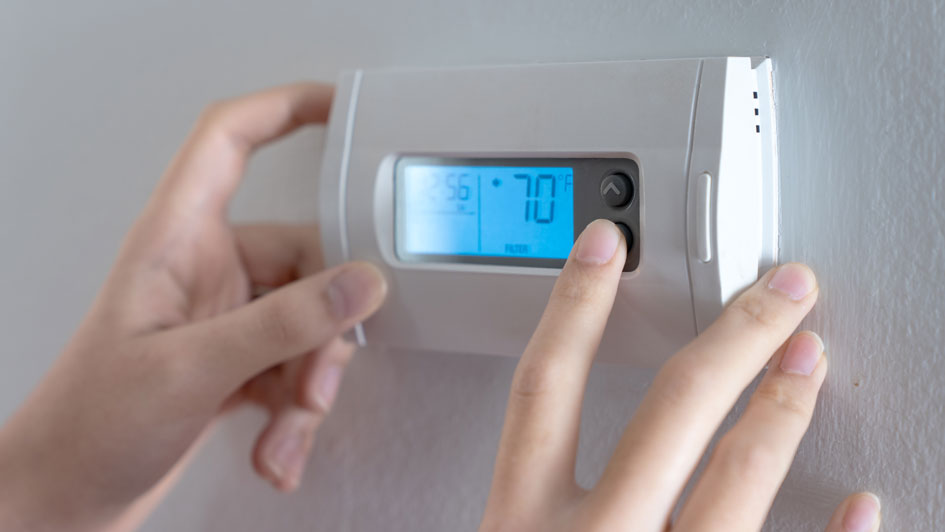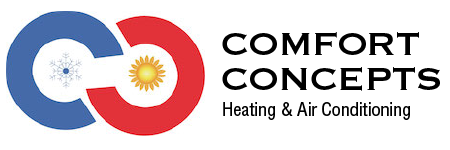
Everyone’s always looking to save money on their utility bills, but it turns out there’s a way to lower energy use, even when you're not even home.
The key is your thermostat. By using automatic schedules, you can structure its daily schedule around your personal preferences. This means establishing various temperature settings for when you’re at home, away or even when you’re sleeping.
With a few simple adjustments, you have more time to enjoy pleasant temperatures while also keeping more of your money. Here are some ways your thermostat doesn't have to use up all your summer spending money:
While at Home
Pretty much whenever you're home, you want a nice range of pleasant temperatures. It's only natural to want your thermostat lower in the summer while inside to make the most of the cool air.
But in terms of energy efficiency, the best range for the summer is usually between 78 and 80 degrees Fahrenheit. With this adjustment, you'll avoid the worst of summer while still lowering your monthly energy bill.
While Away
When it comes to setting the temperature for whenever you're gone, it’s advantageous to set the thermostat higher for while they're gone.
If your home is in a shady spot in a cooler climate, you can set the thermostat to higher temperatures like 88 degrees while no one is home before you adjust it back to the sweet spot of 78-80 degrees once you're home again. This way, your air conditioning system isn't working around the clock to cool an empty house.
While Asleep
When it comes to sleeping in the summer, you want a nice cool temperature. You should try and keep things between 68-72 degrees Fahrenheit. You won't have to worry about getting too hot or too cold at some point overnight.
Additional Ways to Reduce Energy Use:
- Smart thermostat installation: Trying a smart thermostat in the summer is an excellent way to reduce energy costs since it can plan your temperature adjustments according to your lifestyle and personal preferences. A smart thermostat manages the temperature if you are home or sleeping, while allowing it to warm up when no one is around. With reliable brands like the Lennox iComfort, you are able to adjust settings and schedules through your smartphone, tablet or laptop. Planning smart thermostat installation in your Yukon home is an effortless way to set the correct temperature even when you aren’t home.
- Replace current equipment with a newer HVAC system: A new HVAC system saves money right from the start. If a system boasts high energy efficiency, your utility bills will be lower because it requires less energy to heat and cool your home. Air conditioning installation in Yukon is a breeze for experienced professionals like Comfort Concepts Heating & Air Conditioning.
- Stay on top of routine AC maintenance: Investing in or ignoring regular air conditioning maintenance in Yukon can have a serious effect on your total monthly energy use. If you stay on top of cleaning key components like the coils, checking for damage and clearing ventilation of dust and debris, this can help your HVAC system perform better during day-to-day use.. More efficient operation reduces strain on important or delicate components and lowers operational costs, leading to lower energy usage, which translates into lower energy bills.
- Replace your air filter regularly: Regularly changing the air filters in your HVAC system saves money by keeping airflow as smooth and consistent as possible. When filters become clogged, air conditioners have to work harder, and the added strain may impact the system’s life span and lead to breakdowns.
- Check if you have enough insulation in the attic: Insulation is a vital part of maintaining an energy-efficient home, keeping the hot air outside and the cool air inside through summer. The North American Insulation Manufacturers Association (NAIMA) suggests that homeowners living in southern climates should install at least 13-14 inches of insulation, while states further north need 16-18 inches.
- Inspect your ventilation: Leaky ductwork can raise your energy bills much more than 20 percent, plus it can potentially allow harmful emissions from your water heater, clothes dryer and other appliances throughout your home. Watching for signs of leaks and sealing them can fix both of those problems.
- Seal all other leaky spots in your home: Finding and sealing any remaining leaks in your home with caulk, foam sealant or weather-stripping can help keep it cooler on hot summer days. It’s also important to check for any gaps around windows, doors and even outdoor fixtures. Devoting time and effort to sealing leaks now can help you save a lot in the long term.

